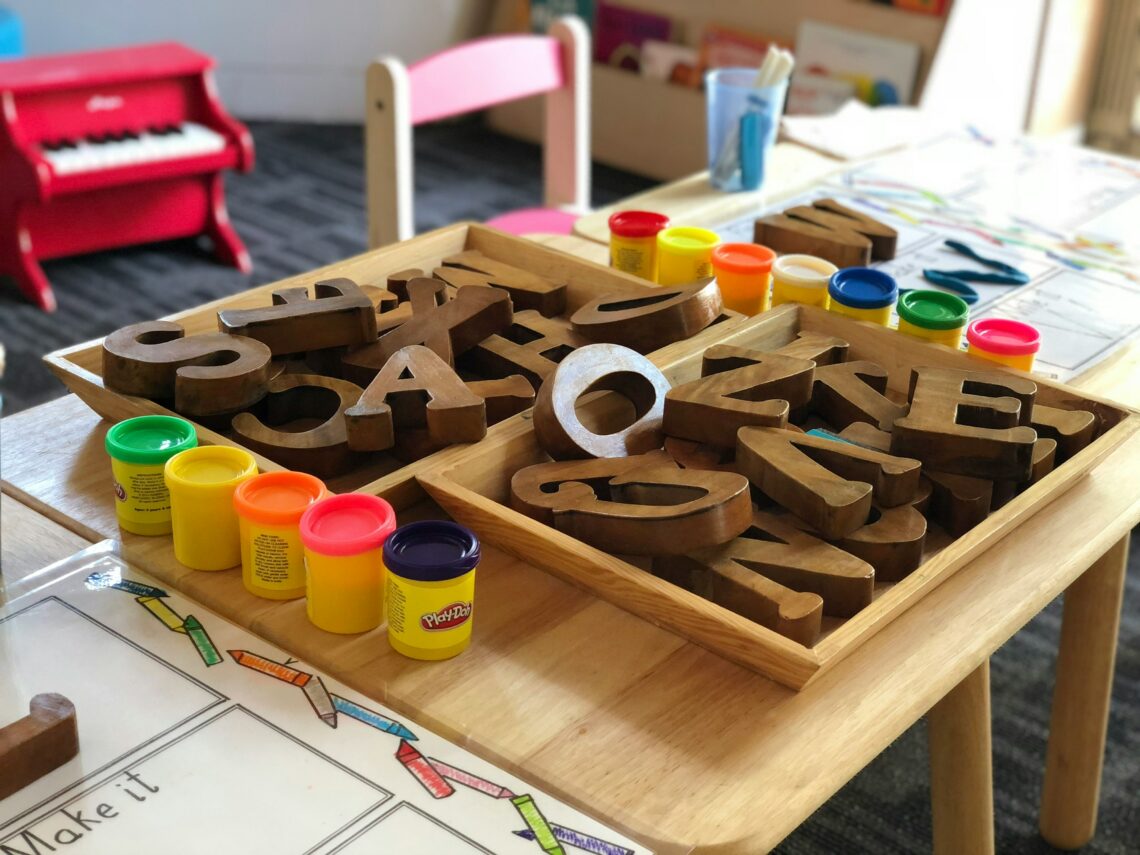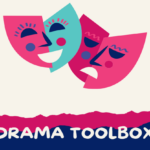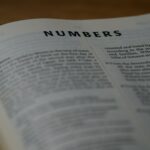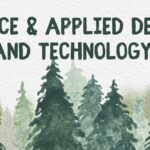For three weeks in a row, I had the pleasure of watching some of Cranbrook’s youngest learners learn and grow before my very eyes! It was my own Kindergarten teacher back in 1987/88 that first made me fall in love with Education and the idea of becoming a teacher. This classroom that I was fortunate enough to spend time in was just as much fun as I remember Kindergarten all those years ago. Though our time spent in the classroom was for a short portion of the morning, our mornings were busy and entailed a number of activities including:

Soft Start – Free Play Centre
It’s no secret that I am a fan of soft start and mindful mornings! After all, I created a whole inquiry-based study on the benefits to students and teachers for my blog. For Kindergarten, the goal is focused on social and interactive curiosity of play. Soft starts have a place in the English Language Arts curriculum though. The big idea of ‘Curiosity and wonder lead us to new discoveries about ourselves and the world around us’ allows us to see that while students are exploring literacy soft start activities such as letter Dino’s or exploration of books, they are using their curiosity to guide their understanding of the English language. While students are focused on starting their day in a calm manner, they are working with their peers to exchange ideas and perspectives to build a shared understanding of the world around them. This is a key curricular competency of English Language Arts in Kindergarten. Looking at the BC Curriculum further, students in Kindergarten are continuously working on their metacognitive and oral language strategies through discussion with their peers.
During these first few moments of the day, I was able to wander around the classroom, allowing me to form relationships with the students and allow them to explain activities they were exploring. Often, I would sit with a group of students and begin to participate in the activity of their choice before moving to a new group of students exploring another option. This portion of the morning, did not only allow me to focus on building relationships with the students, but also, learn more about their curiosity and wonders of the world around them. Generally, each day consisted of 2-3 table activities, a floor puzzle and books from the book shelf were always open. As the theme in the classroom was Dinosaurs, most activities focused on dinosaur characters. Prior to exploring options that had been laid out for them, students would also have to answer a question on the board that as a class they would explore during their morning meeting. As kindergarten students, students are invited into the classroom prior to the bell to settle into the classroom before the start of the day.
Calendar
Once the bell rings to signal the start of the day and the majority of the students have already settled into the classroom, students would complete a quick tidy of the stations and the classroom. The teacher would then ask students to start heading to the carpet for calendar time. Students had designated squares at the carpet and were allowed to grab a “rocker chair” if they felt it will help them stay in their spot at the carpet. This portion of the morning was more of an observation for myself and the other teacher candidate as this portion, along with the morning meeting was teacher directed and student lead. One student, is the special helper, and this student would go through the motions of morning Calendar with the help of their peers. As student candidates, we observed the student’s knowledge and joined in any songs or short poems that were sang to help students remember the days of the week, months of the year, and the weather. It was fun to see how engaged all students were with the process of calendar.
Calendar is an important part of learning in kindergarten as it uses a couple big ideas from the English Language Curriculum such as ‘Through listening and speaking, we connect with others and share our world’; and ‘Curiosity and wonder lead us to new discoveries about ourselves and the world around us’. Students in kindergarten are still discovering the proper use of oral language and are the starting point of putting oral language together with the written language and early reading comprehension strategies. During calendar, students use prior knowledge to make their learning meaningful. While working through the morning routine of calendar, students use oral, reading and metacognitive strategies, and the special helper also uses some writing processes as they hep build the shape of the day. While this may appear to just b a basic use of time to learn common skills of calendar, students focus not only on their English Language Arts skills (Letter sounds, communication skills) but also on science (the weather), and math (days in school, 10 frames, counting, and patterns).

Morning Meetings and Show & Tell
The morning meeting was tied into the student’s morning portion at the carpet along with show & tell and calendar. I chose to focus on the connection between morning meetings and show & tell because, while we observe many of the same aspects of the BC Curriculum’s Big Ideas in prior activities, I believe these components complement each other and provide a deeper engagement with the English Language Arts curriculum. Morning meetings and show & tell, serve as an opportunity for students to practice essential skills in speaking, listening, and building community, which aligns with the curriculum’s emphasis on communication and relationship-building.
Learning about the significance of morning meetings was a key highlight of our Management Class (EDCI 408) this past fall as teacher candidates. During our class as teacher candidates, we explored how these meetings serve not just as a way to start the day, but as an important tool for fostering a positive, inclusive classroom environment. The discussions helped us understand how these meetings can be used strategically to address both the emotional and academic needs of students, helping them to develop social-emotional skills alongside their academic progress. There are numerous benefits to incorporating morning meetings into the classroom, and the lessons I’ve taken away from my class have remained with me. Below, I’ve highlighted a few key benefits that I’ve found particularly impactful:

Morning meetings are an excellent tool for teachers working with students of all ages. They primarily help set a positive tone for the day while fostering a sense of community among students. These meetings provide a valuable opportunity to assess both the emotional and academic well-being of the class. In kindergarten, the focus in English Language Arts is on foundational skills in understanding both oral and written text. Morning meetings give students the chance to strengthen their connections with peers, as they engage in listening and speaking, helping them share their world and build relationships. This speaks to the Curriculum big idea of ‘Through listening and speaking, we connect with others and share our world’. Students draw on prior knowledge and various sources of information while learning to apply effective reading and listening strategies to make their learning more meaningful. They actively listen, share ideas, and engage in discussions to build a collective understanding of their learning. These activities demonstrate how students meet the curricular competencies outlined in the BC Curriculum.
Similar to the morning calendar, our involvement in the morning meeting consisted of observing and participating in the chants and songs sung by the students. Since these students are in kindergarten, observation plays a key and essential role. As new teachers, it’s important to understand how students develop phonemic and phonological awareness, as well as how they assign meaning to symbols through both recognition and sound in both oral and written language. Students during the show & tell portion are asked to share an item that correlates with the letter of the week. Each student shares 3 facts about their hidden item to their peers. Their peers are asked to raise their hands if they have other questions that could help them or others guess what the item is. Then the students are asked to start guessing. Students must raise their hand are and called upon by the presenting student. Once three guesses have been made the student shares what their item is. The presenter is then allowed to take three questions from their peers about the item before the next presenter presents. Each day only a handful of presenters present their show & tell. Below is an example of what this process may look like.

Literacy Centres
During two of the three weeks we visited the classroom, we had the privilege of actively participating as students engaged in various literacy centers. For the most part, we worked individually at tables, taking the lead in a literacy center while students rotated every 7-10 minutes, based on the teacher’s instructions.
On my first day in class, I sat with the students and worked through a lesson combining literacy and STEM concepts. The letter of the week was “G,” and the students had already been introduced to the story of Goldilocks and the Three Bears in the previous lesson. As part of the activity, I was given a “Fairy Tales Problem Solving Kit,” which included a card that highlighted key moments of the story.
I reviewed the story with the students, prompting a discussion about its events. Afterward, the students were challenged to build a chair that could support figurines representing Baby Bear, Mama Bear, Papa Bear, and Goldilocks. Each figurine had a different weight, making the task of creating a sturdy chair that could hold all of them quite tricky. The students worked creatively to solve the problem, testing different designs and discussing their ideas along the way.
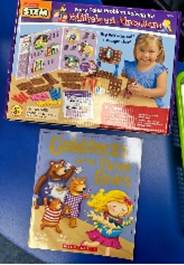
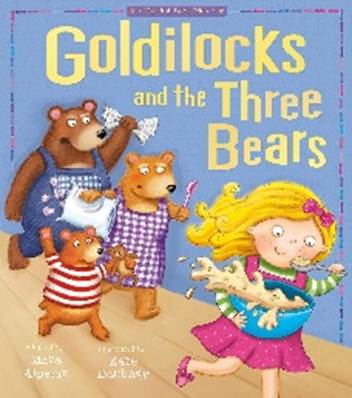
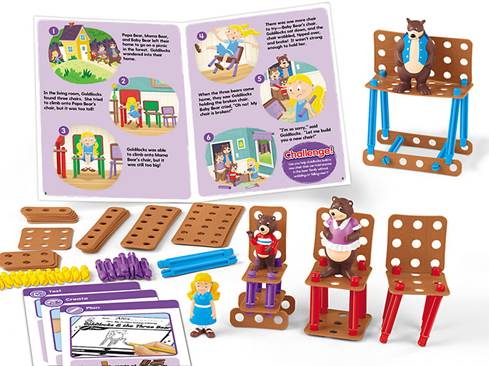
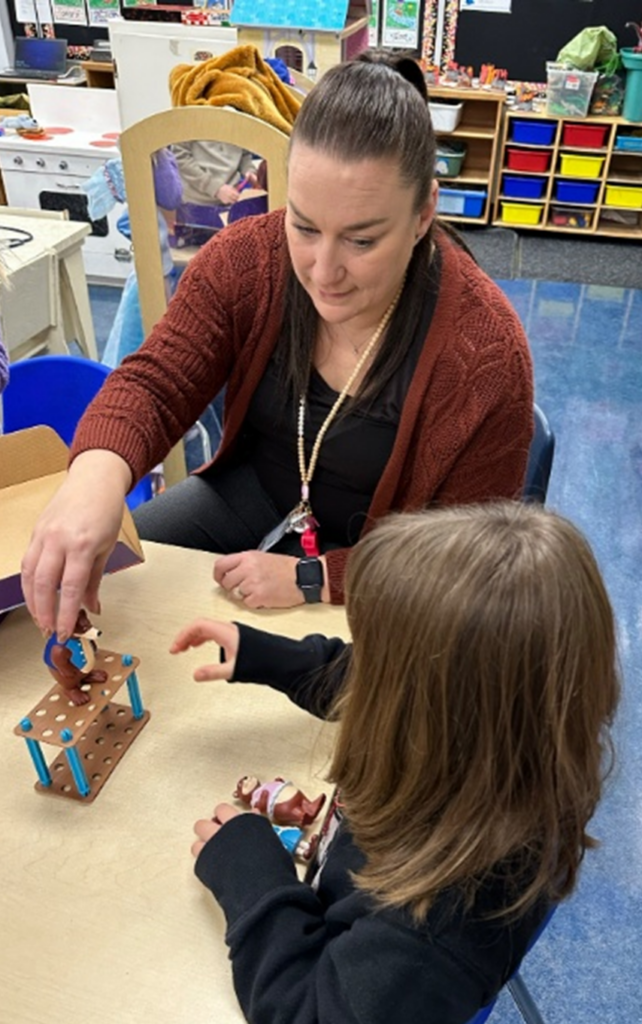
Other centres included students needing to follow the letter sounds of pictures through the maze. I didn’t work with students on this centre, but the other teacher candidate explained the centre to me at the end of the day. This station is a great reinforcement of letters and sounds students have learned previously. On our last visit, we did literacy centers again. Students were divided into groups based on their milestones. For one of the centre students used large buttons and arranged them to create letters. In another station, students worked with the teacher to form words. Students needed to find the first sound, the vowel sound and the ending sound before they could move the letters down the giraffe’s neck to form a three-letter word.



These activities align with several key components of the BC Curriculum for Kindergarten students. As I’ve discussed in other parts of this blog, Kindergarten students primarily focus on developing early literacy skills, enhancing their oral language abilities, and learning how to express and comprehend stories and texts. Literacy centers play a vital role in helping students meet these goals. Through activities that involve reading, listening, and viewing, students actively engage with stories and visuals, connecting new information to their prior knowledge and developing their comprehension skills. They are encouraged to use their personal experiences to relate to the activities, which deepens their understanding and makes the learning more meaningful. What I particularly appreciate about literacy centers for younger students is that they provide opportunities to explore the fundamentals of print, oral storytelling, and visual literacy. These interactive experiences foster critical thinking, creativity, and communication skills, all of which are essential components of the BC Kindergarten curriculum. Literacy activities extend beyond the English Language Arts curriculum, many of the activities also included aspects of Math through problem solving, and Art through songs and chants to increase memory of letter sounds and formations.
Writing Activity
On our second visit to the classroom, instead of literacy centres, students focused on a writing activity. Students had been learning about dinosaurs for awhile now and so after their morning meeting, The teacher read them called If I had a Dinosaur.
After students listened to the book on the carpet, the headed to tables where there were each given a sheet to colour and finish the sentence “If I had a pet dinosaur…….”
Students were each given a white board and a dry erase marker where they would let an adult know what they wanted to write. Students were encouraged to try to sound it out if they could, or copy what they adult wrote on their dry erase board. In order for them to move onto colouring of their sheet, they need to have the paper reviewed by an adult who would mark any words that were hard to read, or ask students to correct letters that didn’t stay in the ‘road lines’ of the paper.

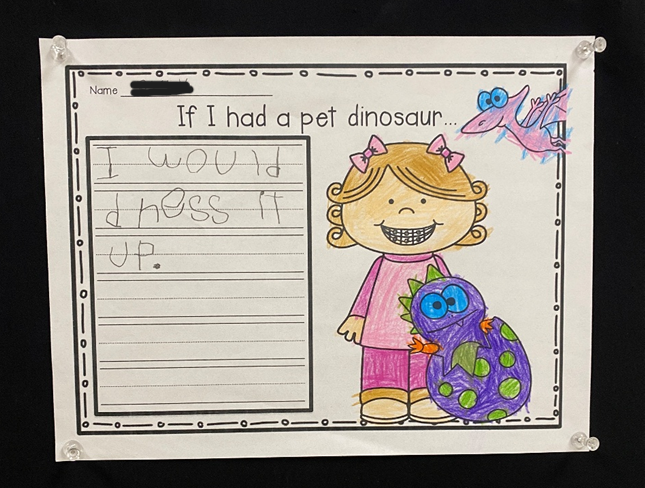
After listening to the book, the students engaged in a writing activity that connected several key aspects of the BC Curriculum. This process allows them to use prior knowledge from the book to create new meaning and express their opinions and preferences. Students also had the chance to share and discuss their ideas with their peers, which helped them build a shared understanding of the story’s themes. This allowed them to connect their prior knowledge to new ideas, making their learning more meaningful. The activity helped them recognize important concepts like letters, words, and sentence structure, while fostering their ability to create and communicate their own ideas. By engaging in the activity, students practiced listening and viewing strategies, which further deepened their awareness of themselves and others, and encouraged them to reflect on their experiences in the context of the story.
Key Takeaways
Key takeaways from this experience include the important role those interactive activities, such as soft starts, calendar time, morning meetings, and literacy centers, play in fostering young learners’ curiosity, engagement, and understanding. These activities support the development of both academic and social skills in kindergarten students, aligning with key aspects of the BC Curriculum. Due to the nature of the activities, we spent a good portion of our morning observing teaching strategies and learning techniques of the students. A large component of kindergarten is building relationship and social emotional learning. Through our time in the kindergarten class, a lot of our focus was building relationships with the students that allowed us to learn and grow as new developing teachers.


Resources
Government of British Columbia. (2019). Building Student Success – BC’s New Curriculum. Gov.bc.ca. https://curriculum.gov.bc.ca/
